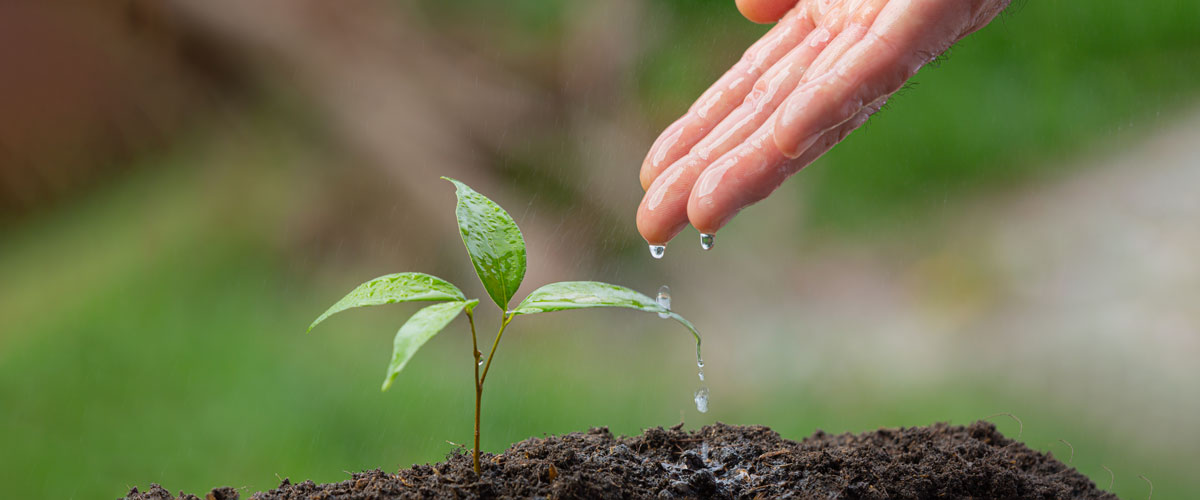The water footprint calculation is an important measurement of the water consumed and polluted by people as a result of their activities and is an emission measurement that is carried out as a result of certain stages. Water use and pollution occurs in agriculture, industrial sectors and at home, such as cleaning, washing, cooling or food use.
To the present day, figures on total water consumption and pollution are derived from the sum of individual water demanding and polluting activities, but clear figures are not often publicized. Fresh water, on the other hand, has been directed more towards trade until today, creating a global market and actually disconnecting water resources from consumers. Because, for example, although cotton is not grown in Malaysia, production is carried out in this country with imported cotton, and the supply chain can be monitored in this way to see how much water resources reach this country and how much consumption is made.
How is the Water Footprint Evaluated?
In water footprint assessment studies, transparent choices must be made and the purpose and scope of the study must be clearly stated. For example, these studies can be carried out to determine a government’s dependence on foreign water resources or to learn about the sustainability of water use in regions where imported water-intensive products enter the country.
Sometimes authorities in a river basin may conduct a water footprint assessment to find out whether the water footprint generated by human activities in the basin violates environmental flow requirements or quality standards in any time frame. Sometimes a company may request a water footprint assessment to reduce water resource dependency within its supply chain and water system impacts of operations along the chain.
Activities achieved through a water footprint assessment include;
- Environmental, economic and social sustainability values of the water footprint ratio presented
- Measuring and positioning the water footprint of a process, product, producer or consumer, or measuring the water footprint over space and time in a given geographic area
- It provides the efficiency to build a response strategy.
By assessing the water footprint, one can analyze how human activities or specific products relate to problems of water pollution or scarcity. At the same time, a water perspective can be used to see what can be done to make activities and products sustainable.
In water footprint assessments, the focus of interest can be on a specific process in the supply and production chain, the water footprint of a consumer, a group of consumers or an entire economic sector. Sometimes the water footprint of a province, a catchment or a geographical area in a river basin may be examined. In such regions, the total water footprint is calculated by summing the footprints of many different processes in the region.
Water footprint assessment is mainly used to perform an analysis. In this sense, within the framework of the tool obtained, the water footprint assessment helps to obtain an insight, i.e. it does not tell people what to do. The assessment is used to help understand the status of activities and products related to water scarcity, water pollution and related problems, and what specific activities and products can contribute to sustainable freshwater.
What are the Stages of Water Footprinting?
There are 4 different stages in total for a water footprint assessment.
What are the Goals in Water Footprint Assessment?
If we look at the general objectives in this assessment, first, it is emphasized what the goal is, whether it focuses on a specific stage, what the scope of interest is and how the timing should be done.
Then the objectives;
- Process water footprint assessment targets consider which process should be considered and which scale should be used.
- When conducting a product water footprint assessment, it is determined which product should be considered, which scale should be used, which consumer or community water footprint should be assessed, and which community should be taken into account.
- When assessing the water footprint in a geographically defined area, after the boundaries of the area are determined, the area of interest is revealed, and the objectives of the valuation are clearly revealed.
How to Assess the Water Footprint of a Nation and the Water Footprint of its National Consumption?
In order to make this assessment, the scope of interest is first considered. In other words, the answer to the question of whether the footprint in a nation or the water footprint of national consumption will be evaluated is provided. Then, considering the area of interest, one can examine how national water scarcity, national water savings through water imports in virtual form, or the water footprint of national consumption affects different countries.
How to Conduct a Corporate Water Footprint Assessment?
When conducting a water footprint assessment for a corporation, the scale of the study is first considered. In other words, whether a whole company or any unit of a company will be examined. Within the scope of interest, a section such as operational or supply chain water footprint can be evaluated. The area of interest could include areas of interest such as achieving corporate environmental reporting, identifying critical water footprint components, or revealing product transparency.
What is the Scope of Water Footprint Calculation?
Inventory boundaries must be clearly and explicitly defined when calculating the water footprint. Within the inventory limits, those to be included and excluded from the accounts are expressed. This will more easily express what the purpose of the account is.
In water footprint calculations, a formation can be realized with the following checklist.
- Is the water footprint being considered blue, green or gray?
- At what level will spatio-temporal disclosures be made?
- Will there be indirect or direct water footprint for businesses or consumers?
- Where will the analysis end when going backwards in supply chain calculations?
- Which data period will be considered?
- When calculating for nations, the water footprint within the country or the water footprint of national consumption can be considered.
What is the scope of water footprint sustainability assessment?
When it comes to the sustainability assessment stage in these studies, the first question that will come to mind is from which perspective the process is handled. In this framework;
- When the process is considered from a geographical perspective, water footprint sustainability is examined in a specific region and usually in areas such as a river basin. This is because this examination allows for easy comparison of water footprint and water capacity, allocation of water resources, and the natural unit where conflicts that may occur.
- If the process is approached from a product, consumer or producer perspective, the focus will not usually be on the total water footprint in a geographical area. In this framework, the focus for discovering the focal point is on what the individual process, product, consumer or producer contributes to the bigger picture. In this case;
- Whether this water footprint is an unnecessary contribution to humanity’s global water footprint
- It is examined whether this water footprint has a contribution on specific connection points.
What is the scope of the Water Footprint Provision Formulation?
At this stage, the scope is determined depending on the type of water footprint. For example, if the water footprint is being examined in a geographically defined area, questions can be asked about how much and in what time frame, and what can be done to reduce the water footprint in this area.
When defining the scope, it is also necessary to be particularly clear about whose response. For example, when people are discussing the water footprint in a geographical area, the first thing that should come to mind is what governments can do.
One can also examine what is happening in this context. For example, companies, farmers, or consumers can do what needs to be done through intergovernmental cooperation. Sometimes different ministries can also take actions in national scopes. In the scopes that determine response measures, the aspects in which the measures will be defined need to be clear from the outset.
How to Calculate Water Footprint?
While water is always on the move on earth, it continues to evaporate continuously from the soil and water surface along with solar and wind energy. On the one hand, plants absorb water from the soil, while on the other hand, they evaporate it into the atmosphere through the stomata in the leaves. When evaporation and transpiration occur together, this process is called evaporative transpiration.
While the atmosphere increases the water in its body through evaporation, it decreases the water in its body through precipitation. While water vapor continues to circulate around the world through the clouds in the atmosphere, water that has evaporated in one place will sometimes not return as precipitation in the same place.
What do people measure when allocating fresh water and why?
On Earth, water in the oceans and water on landform a cycle between each other. The water that evaporates from the ocean and descends to the land with rains eventually reaches the land again, and the volume of water in the world is generally equal as it reaches the land again from the ocean.
Since humanitarian purposes are generally carried out on land throughout the world, humans need fresh water. Within the framework of the hydrological cycle, humans need to allocate fresh water. If a river basin is considered as an example of this allocation, considering the entire geographical area draining through the river and its branches, all the flow reaches the same outlet and a catchment area is obtained.
To calculate the total annual water availability in a catchment area, the annual rainfall volume is reviewed. Ignoring some small variations at this point, the total annual precipitation may be partly evapotranspiration and sometimes water may leave the catchment through runoff from the catchment. In this case, people can attribute both runoff and runoff due to evaporation.
How to Calculate the Green, Blue and Gray Water Footprint of Agricultural Products or Trees?
Agricultural products and trees are used for many purposes, such as food, industrial products, clothing or fuel. Therefore, the agriculture and forestry sectors are the main water consuming sectors. In this respect, agricultural and forestry products also have a significant water footprint. In these products, especially the growing water footprint of the crop or tree should be examined.
In agriculture and forestry, evapotranspiration can be measured and estimated with an empirical formula using data such as evaporation, soil properties and crop characteristics. In order to estimate the green, blue and gray water footprints when growing a crop, the data sources in the list below are needed.
- Climate data
- Crop, soil and irrigation maps
- Cropping parameters
- Crop yields
- Fertilizer and pesticide application rates
- Natural concentration rates for receiving water bodies
- Ambient water quality standards
- Actual concentration of the inlet water
In general, crop field location information is needed, but collecting this data is laborious and the assessment allows for a rough estimate, whereas data from locations or easily accessible regional environments can be used.
How to Calculate Product Water Footprint?
The total volume of freshwater used directly or indirectly to produce a product reveals the water footprint of a product. For estimation, water consumption and pollution in all production chain steps are prioritized. The water footprint of products is divided into components such as green, blue and gray.
For agricultural products, water footprint measurement is often expressed in m3/ton or l/kg. For industrial products, the water footprint can often be expressed in m3/US$ or volume of water per piece. Sometimes water volume/kcal or water volume/joule can be used to express the water footprint of products.
What is the Chain Accumulation Approach?
The chain sum approach is simpler than the step-by-step cumulative approach, but can only be applied when a production system produces an output product. In this particular system, the water footprints associated with the different process stages of the production system are brought together and linked to the product resulting from the system.
What is the Step-by-Step Cumulative Approach?
In this approach, in order to determine the water footprint of a product, the water footprints of the input products required for this product and the process water footprint in the processing stage are taken into account. So, for example, there may be several input products for an output product. In this context, the output product water footprint can be obtained with the sum of the water footprints of the input products and the sum of the process water footprint.
For example, when an input product named A is processed, a product named B is obtained. In order to calculate the water footprint for product B, the input products have numbers between i=1 and A. Considering that output products C are obtained through the processing of input products A, output products will also have numbers between b=1 and C.
How to Ensure Resource Usage?
In terms of calculating the water footprint of the end product in a production process, it is best to start calculating the water footprint of the most original resources from the point where the supply chain starts. Then, until the water footprint of the final product is calculated, the water footprints of the intermediate products are calculated respectively.
In this calculation system, the process water footprint of the process performed in the water footprints of the input products from the first step to the last step may cause changes in the process water footprint. For example, sometimes wet milling, sometimes closed cooling, sometimes water evaporation. Instead of using general estimates, it would be more accurate to calculate these calculations by obtaining data from manufacturers and factories at the source.
How to Calculate the Water Footprint of a Consumer or a Group of Consumers?
When the first consumer uses a good or produces a service, the total volume of fresh water consumed and polluted for this purpose constitutes the water footprint of a consumer. When calculating the water footprint for a group of consumers, the water footprints of individual consumers are summed to obtain the result.
At different levels of analysis, the source of the products consumed can sometimes be precisely traced. If the source cannot be traced, it will be necessary to consider global or national estimates of the water footprint for consumed products. If product sources can be traced, better results can be obtained when product water footprints are obtained with accurate estimates.
For private goods and services, a water footprint is calculated by allocating the water footprint to the consumer of the private good. In the calculation of water footprints for public goods and services, water footprint rates are allocated to consumers according to the share of each consumer.
How to Calculate Water Footprint in a Specified Geography?
Total freshwater consumption and pollution within the boundaries of a defined geographical area refers to the water footprint in this area. In this respect, the boundaries of the geographical area must be clearly defined. The defined area can be a city, a state, a country or an administrative space.
The water footprint in a geographical area is obtained by summing the process water footprints from all processes that use water in the area. The result;
- If there is a positive virtual water balance, there is a net virtual flow of water to different areas.
- If there is a negative balance, there is a net outflow of virtual water.
- If there is a gross import of virtual water, this will be very interesting. Because in this case, virtual water importation results in water savings within the area. In this context, the water footprint obtained through the consumption of people outside the region will be determined.




